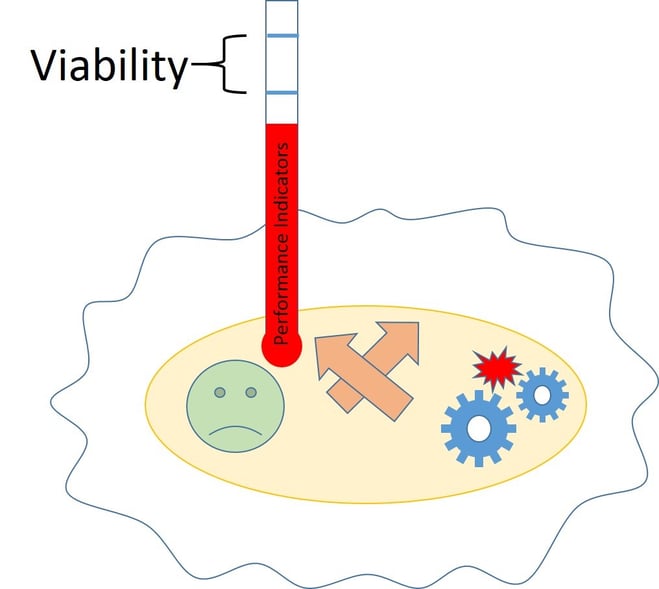
If you were asked to draw a picture of an enterprise before its transformation and a picture after its transformation, like in the classic before/after house renovation advertising, what would it look like?
As an enterprise architect looking for a way to represent an enterprise, we can interrogate TOGAF. It tells us that an enterprise is a system of systems, and that Enterprise Architecture is about managing enterprise transformation toward a target operating model; unfortunately TOGAF does not tell us how to draw a system of systems.
Fortunately there is a model, recently re-introduced by Patrick Hoverstadt in his book “The Fractal Organisation”, which is just about that, i.e. representing enterprise organisation as a system of systems. The Viable System Model tells us how viable organisations need to be structured in order to deliver their expected outcomes within their environment. For instance a malfunctioning performance management relationship between management and the operational units, is seen by the VSM as a structural defect, developing imbalances which affect the enterprise viability.
The VSM provides a mental model to observe, question and assess how an enterprise existing operating model compares to the required ingredients of viability. So, the picture of an enterprise before and after its transformation could probably be drawn with the help of the VSM.
Here is what TOGAF says about itself: TOGAF is “a framework for managing the spectrum of change required to transform an enterprise towards a target operating model” (in the TOGAF® Version 9.1 Book – Chapter 4.2 The Benefits of TOGAF).
Often, the enterprise’s capacity to deliver its expected outcomes is stressed in the face of both expected and unexpected changes in its environment.
The gap keeps widening between the strategic intents and the actual outcomes. The enterprise viability deteriorates, and its operating model no longer fits its environment.
Our enterprise in need of transformation could be pictured with people’s faces showing how much they appreciate being submitted to unclear or conflicting directives on broken or misaligned activities, and supported by less-than-smoothly operating pieces of technology.

However, this picture might not be detailed enough to show which parts of the enterprise operating model require work.
If, like TOGAF 9, we consider our enterprise as a system of systems (“Enterprise architecture structures the business planning into an integrated framework that regards the enterprise as a system or system of systems” TOGAF® 9.1 web > Part II: Architecture Development Method (ADM) > Preliminary Phase> Relating the management frameworks), then it would be interesting to try to represent that extra dimension of systems.




